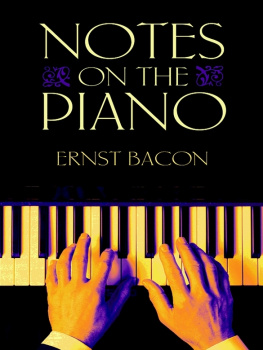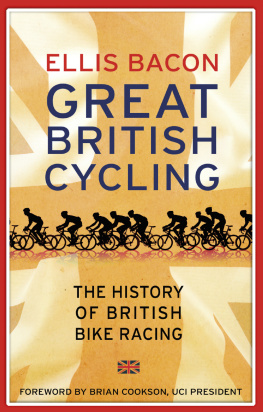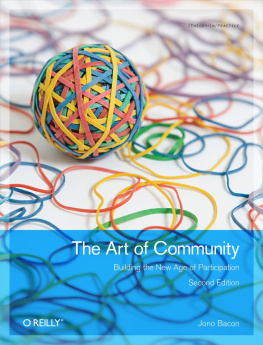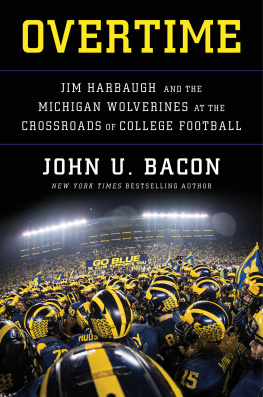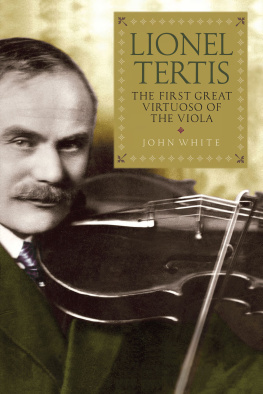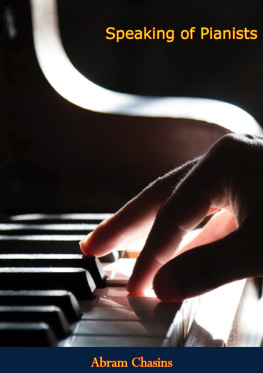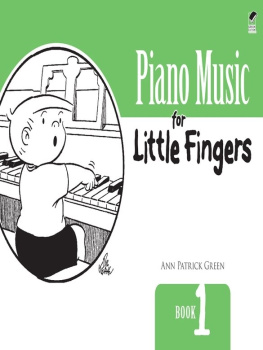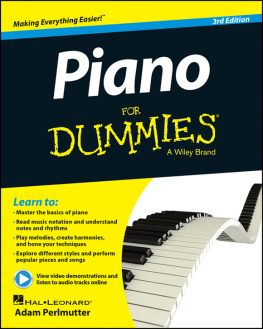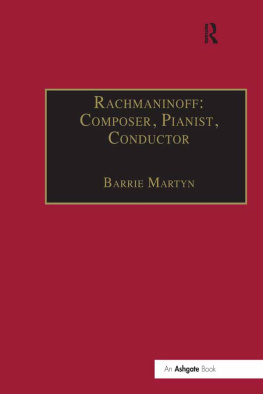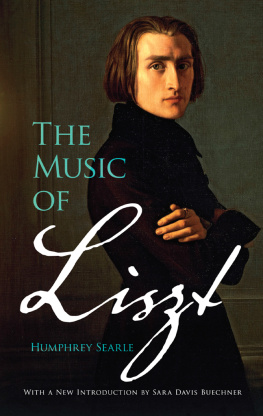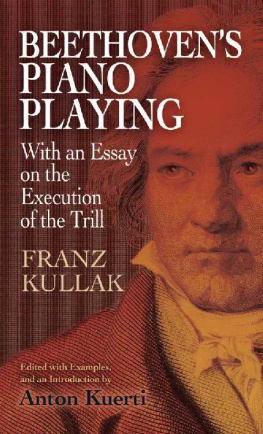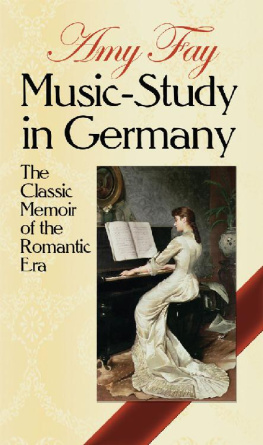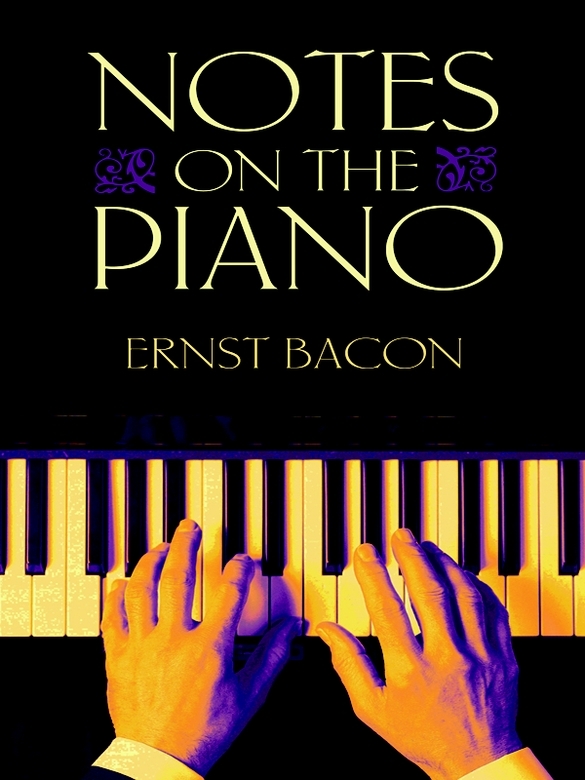i
Of Interpretation
An artist should never lose sight of the thing as a whole. He who puts too much into details will find that the thread which holds the whole, thing together will break.
F. CHOPIN
Like the actor and the stage director, the interpreter stands as middleman between the writer and his public. All depends on him. The more unique is the work, the more convincing must be its reading. There are canons of originality no less than of conformance, to unsettle which requires the most skillful advocacy. When Chopin sounds badly, the pianist is at fault. But when John Smiths music sounds badly, Smith alone is blamed.
The performing art may represent today a level superior to that of the writing art. As against the anarchic confusion existing in the composing field, the standards in performance are technically higher and more fixed than ever before. Whoever chooses novelty in writing is allowed to be innocent until proven guilty. But in performance, a deviator is adjudged guilty until he proves his innocence. Never before was performance as disciplined as today: never was writing less so.
It was no accident that Chopin included two of his finest nocturnes in his book of etudes. It is interesting that the piano, an instrument of percussion, should have gained so large a share of the literature of melodic music. Quite probably this is because it is capable like no other instrument of combining harmony with melody, is complete in itself, and does not suffer the organs limitation of tone. The artful grading of the pianos percussive tones, as to length, loudness, timing, delay and haste, and all the relations of melody to accompaniment or countermelody ; these together with pedalling, make possible the pianos illusion of continuous and expressive melody.
The pianos resonance does not stop with the piano itself, as anyone knows who has played out of doors. The entire hall is involved in its vibrations. Since the player cannot remove himself from the origin of his sound, he can hope to hear himself as others hear him only through electrical devices, or by exercise of his imagination. There is every reason to think that the greatest artists have given thought and ear to producing sounds that fill and carry the best in whatever hall is at hand. I have heard Kreisler, alone with his little Guarnerius, fill a colosseum in which a large orchestra tried vainly to conquer its vacuous immensity. One must know the point beyond which the enlargement of tone is not only useless but harmful. The ear of the listener adjusts easily to all levels, and is ready to accept lesser sounds as climactic, so long as they are proportioned to other sounds. Segovias unamplified guitar will prove this. It is quality that carries where quantity fails; the imagination defeating decibels.
Any extreme; of slow or fast, rough or smooth, soft or loud, goes with a heightened tension. Middle ground is middle effort. The lazy player can no more achieve a pianissimo than a fortissimo, a largo than a presto. There is nothing more demanding than a sustained slow tempo unless it be an expressive dolcissimo. Alexander Raab remarked that Toscanini showed his age, in his vigorous middle eighties, only in that the tempos of his slow movements were not quite so slow as before. If there is one trait common to all great interpreters, it is their capacity for intensification. There are many ways to achieve intensity, dictated by the music; but whether explosive, impassioned, eloquent or restrained, intensity will always be felt as a mark of inner energy.
Without this intensity, the listener never more than half listens. But when it is there, his attention is drawn in ratio to the players concentration ; he feels what the player communicates, on whatever level it may be.
We are content if the singer is master of but one category of singing. Thus we designate the voice as lyric, dramatic, coloratura and the like. But the pianist is expected to be all of these, and his preparation embraces all styles. In point of fact, his best gifts are as circumscribed as those of the singer; and by confining himself to his own special sphere of playing he may surpass those who essay to do all. A full mastery of but one idiom may represent more breadth than a versatile, and necessarily shallower, proficiency in all idioms. There is breadth in depth, no less than depth in breadth. Some travel most profitably at home.
Nevertheless, the discovery of what is ones own special sphere of music should not be hastened; rather it should grow out of a wide range of trial and effort, particularly among those of student age. It is best to settle down after one has seen something of the world.
Great virtuosity should not be made an absolute condition of a pianists acceptance as artist, any more than mere power, range, or skill in fioritura, on the part of the singer. He may have exceptional tonal, melodic, coloristic, or imaginative qualities which deserve acclaim, the more so in an age in which facility has become common currency.
The whole rule of rubato is grace. Every increase and decrease of tempo has to do with the demands of declamation: phrasing, words (if any), accents, rests, harmony, and all the idiosyncrasies of instruments (such as the crossing of strings in the violin, breathing in the winds, securing the pedal base in the piano, allowing for extended leaps, and other undue manual difficulties). The rubato has also to do with the dimension of a work, a large work normally concluding with a longer allargando, for example, than a small one, just as a freight train takes longer to come to a stop than a motor car. An abruptness is allowable only when it is meaningful. A jerky or irregular increase or decrease in tempo is a misdemeanor, and reveals an insecurity of control, as with an adult who cannot walk steadily. Some music is all rubato, as is much of Puccini. Other music comes as close as is humanly possible to metronomic regularity, as does nearly all dance music, which expresses the bodys pleasure in a regular, measured movement.
The declamation of music seldom permits the hastening of a beat, but is continually calling for delay. A delay calls attention to itself and is, in some degree, emphatic. On the piano this delay is mostly effected with both hands together, but sometimes it takes the form of the melody note following its chord, or accompaniment. This latter has the effect of warming the tone, as with an imaginary vibrato, or else it suggests the singers portamento. But a continuous delaying of melody notes can easily become a sentimentality or mannerism.
Embellishments stemming from a time before they were written out are a large subject, best studied in C. P. E. Bach, Quantz and Leopold Mozart. The pianist of today is not obliged to abide literally by the instructions of these masters, conceived as they were for other times, tastes and instruments; but he should learn them before permitting himself liberties. The modern piano, differing from its predecessors in power, sustainment of tone and pedal, poses new approaches. In general, it invites less decoration, and tends toward simplification, just as the more powerful orchestra and the organ of earlier times were treated more simply than the fragile and voluble clavichord or harpsichord.
To preserve the spirit of embellishment may require a deviation from the letter.
The quality of a turn tells me a great deal about an interpreter. A first-class carpenter should also be a first-class cabinet-maker, and shows his craft in the delicacy no less than the doughtiness of his structures. Elizabeth Schumann could make the littlest turn in, say, Schuberts Litanei a moment of sheerest poetry. Some pianists of otherwise large abilities can make a turn seem like a footnote.

